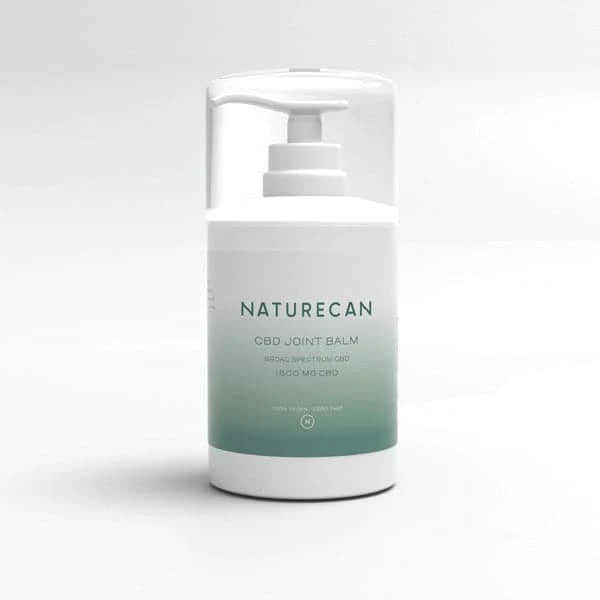What are the best treatments for Joint Pain?

Joint pain is a pervasive issue affecting millions of individuals worldwide. Whether it manifests in the elbows, knees, hips, or other joints, this discomfort can arise from various factors such as injuries, arthritis, overuse, or underlying health conditions.
Understanding effective remedies, medication choices, and alternative treatments like CBD gummies for joint pain is crucial for improving one's quality of life amid such discomfort.
Understanding Joint Pain
Joint pain refers to discomfort, soreness, or inflammation arising from any part of a joint, where two or more bones meet. It manifests in various forms, with osteoarthritis, rheumatoid arthritis, and gout being common culprits.
Osteoarthritis, characterised by the gradual degeneration of joint cartilage, often affects weight-bearing joints like knees and hips. Rheumatoid arthritis, an autoimmune disorder, targets the synovium, causing painful swelling in multiple joints. Gout, on the other hand, results from the accumulation of urate crystals, typically affecting the big toe.
The nature of joint pain extends beyond physical sensations, as it can significantly impact an individual's quality of life. Joints critical for mobility, such as elbows, knees, and hips, are particularly vulnerable.
Limitations in movement, stiffness, and chronic discomfort can hinder daily activities, from simple tasks like walking or climbing stairs to more complex movements. The consequential impact on one's overall well-being underscores the importance of understanding and addressing the diverse causes and forms of joint pain.
The Spectrum of Joint Pain:
Acute joint pain arises suddenly, often due to injury or strain, displaying rapid onset and temporary discomfort. It's characterised by inflammation, swelling, and limited movement, usually responding well to rest, ice, compression, and short-term pain relief measures.
Conversely, chronic joint pain persists for an extended period, exceeding three months, commonly associated with conditions like arthritis or long-term illnesses. Chronic pain fluctuates in intensity, impacting daily life consistently, demanding a more comprehensive approach involving medications, physical therapy, and lifestyle modifications.
Tailored treatments for chronic pain might include disease-modifying drugs, corticosteroid injections, or surgical interventions for severe cases. Continuous monitoring is vital for both types, ensuring proper healing in acute instances and assessing the effectiveness of interventions for chronic pain, allowing adjustments to optimise management strategies.
Identifying Joint Pain Symptoms
Recognizing joint pain symptoms is crucial for timely intervention. Self-assessment involves paying attention to various indicators:
- Location and Frequency: Note the specific joints affected and how often discomfort occurs.
- Intensity and Duration: Assess the level of pain and how long it persists after certain activities or at rest.
- Swelling or Redness: Observe any visible signs of inflammation or changes in the joint's appearance.
- Movement Restrictions: Identify any limitations in range of motion or difficulty performing daily tasks.
Seeking professional medical advice is essential for accurate diagnosis and tailored treatment plans. However, initial home remedies can provide relief. Resting the affected joint, applying ice packs intermittently for 15-20 minutes several times a day, and gentle exercises to maintain mobility can help alleviate discomfort.
Nevertheless, it's crucial to consult a healthcare professional for a comprehensive evaluation and personalised guidance to address underlying causes and manage joint pain effectively.

Exploring Joint Pain Medication
Joint pain medications encompass both over-the-counter (OTC) and prescribed drugs, each serving distinct purposes. OTC options like acetaminophen, ibuprofen, and naproxen sodium offer relief by reducing pain and inflammation.
Prescription medications, including nonsteroidal anti-inflammatory drugs (NSAIDs) like celecoxib, corticosteroids, and disease-modifying antirheumatic drugs (DMARDs) such as methotrexate or biologics, target specific conditions like arthritis and autoimmune disorders.
However, the suitability of these medications varies based on individual health conditions, potential side effects, and desired outcomes.
Consulting healthcare providers is paramount to determine the most suitable medication regimen. Professional guidance ensures the proper management of underlying conditions, minimises adverse effects, and optimises treatment effectiveness, emphasising the significance of tailored approaches for managing joint pain.
Effective Remedies for Joint Pain
Lifestyle Modifications:
- Maintain Healthy Weight: Reducing excess weight alleviates pressure on joints.
- Balanced Diet: Incorporate anti-inflammatory foods like fatty fish, nuts, and berries.
- Regular Exercise: Low-impact exercises such as swimming or cycling strengthen muscles around joints.
- Proper Posture: Maintain good posture to alleviate stress on joints.
Home Remedies
- Cold and Heat Therapy: Alternating between ice packs and warm compresses can reduce inflammation and soothe joint pain.
- Epsom Salt Soaks: Baths with Epsom salts can ease soreness and relax muscles.
Personalised Exercise Routines
- Stretching: Gentle stretching exercises improve flexibility and reduce stiffness.
- Strength Training: Building muscle around joints supports their stability and reduces pain.

Naturecan Products for Joint Pain
Vegan Omega-3
Our Algae Omega-3 is a great choice for vegans and vegetarians looking for the benefits of EPA and DHA fatty acids. Even though there are many plant-based Omega-3 that you can incorporate into your diet including:
- Walnuts
- Flaxseed
- Soybeans
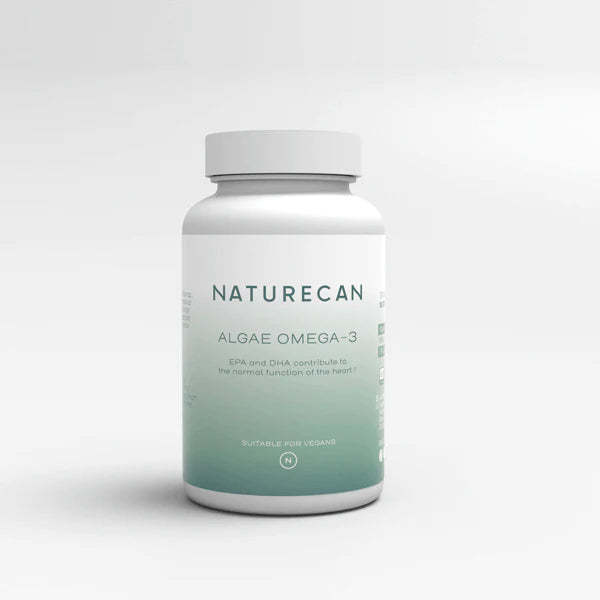
Active Curcumin
Powered by NovaSOL®, our convenient Active Curcumin capsules combine 500mg curcumin with a daily dose of vitamin D3, helping to support your immune system and maintain everyday muscle function.
Shop Now
Glucosamine and Chondroitin Capsules
Ideal for people leading active lifestyles, our Glucosamine and Chondroitin Capsules offer a simple way to support mobility and joint health, particularly during exercise. Often taken together as a supplement, glucosamine and chondroitin are two structural components of cartilage, the connective tissue which cushions joints and absorbs impact – making our capsules a great choice for anyone taking part in rigorous exercise.
Shop Now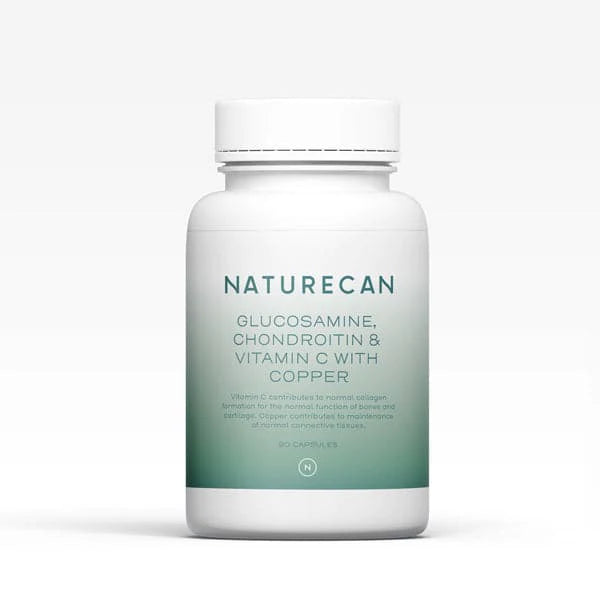
MSM Powder
Methyl-sulfonyl methane, commonly referred to as MSM, is an organo sulfur compound that’s commonly found in fluid around the joints. You can receive tiny amounts of MSM in certain fruits, vegetables, meats, cereals, tea, coffee and more, or you can try our MSM Powder for the daily dose you need.
Shop Now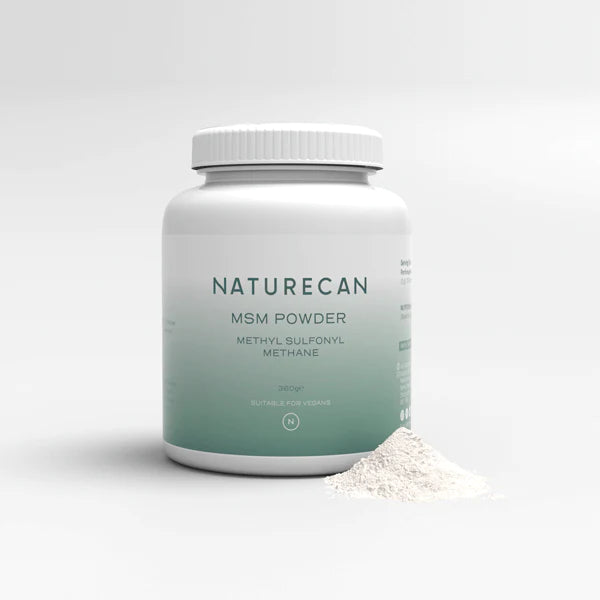
Vitamin D3 & 2K
Vitamin D3, while crucial, is challenging to absorb through food. It's primarily produced by the body when exposed to UV radiation from the sun. Especially in regions like Europe and during the winter months, many individuals don't receive enough sunlight to achieve optimal vitamin D3 levels. This makes supplementation vital for maintaining good health.
Vitamin K2 plays a pivotal role in activating osteocalcin and MGP (matrix GLA protein), which are responsible for transporting and storing calcium in the bones. This ensures that calcium is directed where it's needed most and prevents its accumulation in blood vessels and other tissues. The synergy between Vitamin K2 and D3 is evident as D3 promotes the formation of osteocalcin and MGP, while K2 ensures calcium is effectively utilised.
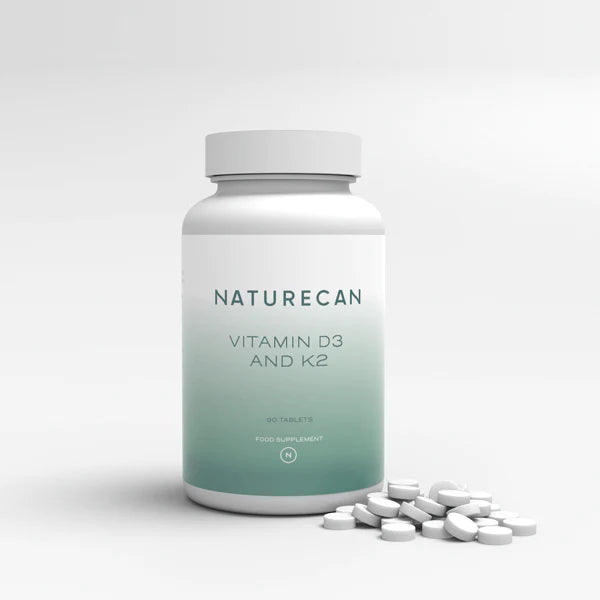
CBD Gummies for Joint Pain
- Anti-inflammatory Properties: CBD, a compound in cannabis, may reduce inflammation associated with joint pain.
- Pain Management: CBD gummies might help alleviate discomfort by interacting with the body's endocannabinoid system.
- Non-Psychoactive: CBD doesn't produce the "high" associated with cannabis due to its lack of THC, offering potential pain relief without intoxication.
- Growing Popularity: Increasingly recognized as an alternative therapy, CBD gummies are sought after for managing joint pain.
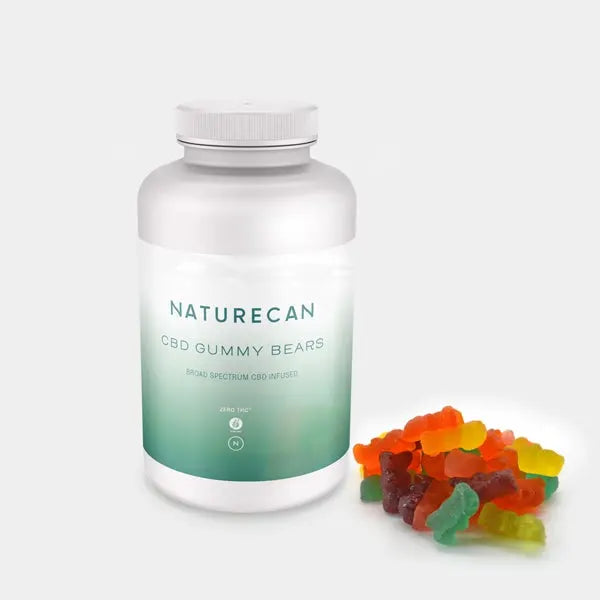
Alternative Approaches
Alternative treatments like acupuncture, physical therapy, herbal supplements, and essential oils offer promising avenues for easing joint pain in specific individuals.
Acupuncture, through the placement of thin needles on specific points, may help reduce pain by stimulating the body's natural pain-relieving mechanisms.
Physical therapy focuses on exercises and techniques to improve joint function and strengthen surrounding muscles, thereby reducing pain and enhancing mobility.
Herbal supplements like turmeric, ginger, or glucosamine have shown anti-inflammatory properties that could alleviate joint discomfort.
Essential oils, such as lavender or peppermint, when applied topically, might offer temporary relief from pain and inflammation.
These alternative methods, when used alongside conventional treatments, can complement each other by enhancing pain management, improving mobility, and potentially reducing reliance on medication, providing a more holistic approach to addressing joint pain.
However, consulting healthcare professionals before integrating these methods is crucial to ensure safety, efficacy, and their compatibility with individual health conditions and ongoing treatments.
When to Seek Medical Attention
Certain signs and symptoms associated with joint pain can signal severe issues that require immediate medical attention, known as red flags. These include:
- Sudden and Severe Pain: An abrupt onset of intense joint pain without an apparent cause.
- Swelling and Warmth: Significant swelling, warmth, or redness around the joint could indicate inflammation or infection.
- Fever and Chills: Systemic symptoms like fever and chills accompanying joint pain could signify an underlying infection.
- Joint Deformity or Instability: Visible changes in joint shape, sudden instability, or inability to bear weight on the affected joint.
- Limited Movement and Persistent Pain: Severe limitation in joint movement accompanied by persistent and worsening pain.
| Types of Joint Pain | Causes | Management` |
|---|---|---|
| Elbow joint pain | - Overuse | - Rest and ice packs |
| Knee joint pain | - Arthritis | - Medication |
| Hip joint pain | - Injuries | - Alternative therapies |
Impact of Joint Pain on Daily Life:
Joint pain can significantly impact numerous facets of daily life, extending beyond physical discomfort. In the realm of work, it may impede productivity, limit the ability to perform tasks requiring mobility or manual dexterity, and even lead to absenteeism.
Sleep disturbances are common, as joint pain can make finding a comfortable sleeping position challenging, disrupting rest and causing fatigue. Mental health can suffer due to persistent pain, leading to stress, anxiety, or depression. Social interactions might also be affected, as engaging in activities or outings can become difficult, potentially leading to social isolation or withdrawal.
Effectively managing joint pain is crucial for improving overall well-being and maintaining a good quality of life. Implementing strategies like proper medication, tailored exercises, lifestyle adjustments, and seeking professional support can alleviate pain, enhance mobility, and contribute to better sleep and mental health.
When pain is managed effectively, it can positively impact work performance, sleep quality, mental well-being, and social connections, allowing individuals to lead more fulfilling and active lives. Prioritising pain management not only reduces physical discomfort but also promotes overall wellness and supports a healthier, more engaged lifestyle.
CBD for Joint Pain FAQs
Does Delta 8 show up on drug tests?
Delta-8 THC can show up on some drug tests that specifically target THC compounds. While it's chemically different from delta-9 THC found in larger quantities in marijuana, it can still trigger a positive result due to its similarity in structure. Some tests might not differentiate between delta-8 and delta-9 THC, leading to detection.
What is the antidote for cannabinoids?
There isn't a specific antidote for cannabinoids. In cases of discomfort or adverse effects due to excessive cannabinoid use, supportive care is typically recommended. This includes staying hydrated, resting, and allowing time for the effects to subside. Seeking medical attention might be necessary if symptoms persist or are severe.
What can consuming too much cannabis result in?
Consuming excessive amounts of cannabis can lead to various short-term effects, including increased anxiety, paranoia, impaired memory, decreased coordination, and in extreme cases, hallucinations or delusions. These effects vary based on factors like the individual's tolerance, the strain used, and the method of consumption.
Does caffeine counteract cannabinoids?
Caffeine doesn't directly counteract cannabinoids. However, due to its stimulating properties, caffeine might help alleviate some of the drowsiness or fatigue that can accompany cannabis use. It doesn't alter the effects of cannabinoids but may mitigate certain side effects.
How long does it take for cannabinoid receptors to recover?
The recovery time for cannabinoid receptors can vary widely. After acute use, receptors may recover within hours to days. However, for heavy or chronic users, it might take weeks to months for cannabinoid receptors to fully reset and return to their normal functioning state.
How do I remove delta-8 from my system?
Removing delta-8 from the system primarily involves allowing time for the compound to metabolise and be eliminated. There isn't a quick method to expedite its removal. Staying hydrated and leading a healthy lifestyle may support the body's natural processes.
How long does it take for delta-9 to get out of your system?
Delta-9 THC, the psychoactive compound in cannabis, can remain detectable in the body for several days to weeks. The duration depends on various factors like the frequency of use, metabolism, and sensitivity of drug tests.
Is CBD the same as Marijuana?
CBD (cannabidiol) and marijuana come from the same plant but have different chemical compositions. While marijuana contains varying levels of THC, the compound responsible for the "high," CBD doesn't produce this effect as it lacks significant THC levels.
Are cannabinoids a toxin?
Cannabinoids aren't typically considered toxins. However, excessive use or misuse of cannabinoids, like any substance, can lead to adverse effects. Responsibly consuming cannabinoids is advised to avoid negative consequences.
How are cannabinoids excreted?
After being metabolised in the liver, cannabinoids are primarily excreted from the body through urine and faeces. The process involves breaking down cannabinoids into metabolites that are then eliminated through these waste products.
Can Muslims use CBD?
The acceptability of CBD Oils use among Muslims can vary based on individual interpretations of Islamic law. Some may consider it permissible if the CBD product doesn't contain THC or other intoxicants.
How do you flush CBD out of your system?
Flushing CBD out of the system isn't quick or straightforward. Similar to other cannabinoids, the body metabolises CBD over time, and it is eliminated gradually through natural bodily processes. There's no immediate method to speed up its removal.
What is best for joint pain?
Managing joint pain involves a multifaceted approach that extends beyond mere medication. It encompasses a holistic strategy integrating diverse remedies, medications, and alternative therapies.
Exploring options, consulting healthcare professionals, and personalising strategies are pivotal steps in addressing specific joint pain concerns. A comprehensive plan might involve medications for relief, exercises to improve mobility, lifestyle adjustments for weight management, and alternative therapies like acupuncture or herbal supplements to complement conventional treatments.
Embracing a holistic approach empowers individuals to actively manage their joint pain, promoting overall well-being and a higher quality of life. By staying proactive, seeking professional guidance, and tailoring strategies to individual needs, individuals can effectively navigate and alleviate joint pain, fostering a more fulfilling and comfortable lifestyle.


